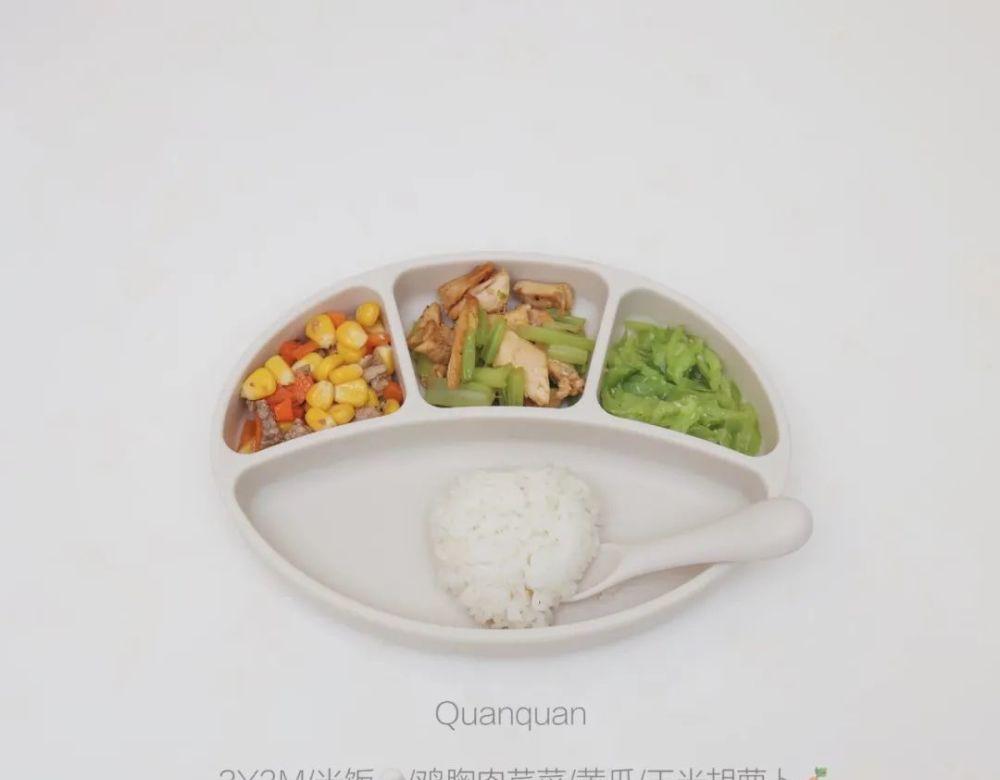Spring is warm and blossoming, and it is time for children to grow and develop relatively fast. Children growing too fast will also cause some parents and friends to worry:
What better should I give him?
Don't worry, Sister Bin is here to tell you.
1. Protein
What does protein do?
It is the main component that makes up enzymes and hormones. In particular, enzyme proteins, which have the effect of promoting food digestion, absorption and utilization; in addition, some hormones are also composed of proteins or their derivatives, such as pituitary hormones, thyroxine, epinephrine, etc., which are closely related to the growth and development of children.
How to supplement protein?
Main food sources: plant-based protein and animal-based protein.
It is best to choose high-quality proteins such as fish, poultry (chicken, duck, geese) and lean meat, eggs, milk, soybeans, wheat and corn.
What is Quality Protein?
High-quality protein refers to the complete variety, sufficient quantity and proportion of essential amino acids contained in it, which not only maintains health, but also promotes children's growth and development.

Image from Parenting Mutual Nutrition and Food Supplement Group: Circle Mom
2. Calcium
What does calcium do?
Form and maintain the structure of bones and teeth; maintain the normal activity of muscles and nerves; participate in the blood coagulation process; participate in the regulation or activation of the active role of multiple enzymes.
How to supplement calcium?
Main food sources: milk and dairy products, rich in content and high absorption and utilization rate; tofu, green leafy vegetables are also an indispensable and important source of daily calcium supplementation. In addition, the content of sesame sauce, kelp, seaweed, mushroom, fungus, green vegetables, nuts, silver fish and so on is also higher.
Parents can choose from a variety of choices and reasonable combinations.
3. Zinc
What does zinc do?
The role of zinc in the human body is the most complex. If deficient, many proteins and enzymes will lose their activity, and cell division and repair in various tissues will not be completed. Therefore, the lack of zinc in children will seriously affect their normal growth and development.
How to supplement zinc?
Food sources of zinc are: oysters, lean beef, pork, lamb, chicken hearts, fish, egg yolks, skimmed milk powder, wheat germ, sesame seeds, walnuts, beans, peanuts, millet and so on.
Image from Parenting Mutual Nutrition and Complementary Food Group: Blueberry Jelly Cheese
4. Vitamin D
What does vitamin D do?
It can promote the reabsorption of calcium by the mucosa of the small intestine, promote the calcification of bone tissue, anti-rickets, and promote the reabsorption of calcium and phosphorus by the renal tubules.
And the absorption and utilization of calcium is inseparable from vitamin D, and vitamin D should be supplemented at the same time as calcium supplementation.
How can I supplement with vitamin D?
Food sources of vitamin D are: marine fish high in fat, animal liver, egg yolks, cream and dry cheese.
In addition to food sources, vitamin D can also be synthesized by basking in the sun.
5. Vitamin A
What does vitamin A do?
It maintains normal bone growth and development. When deficient, the balance between osteoblasts and osteoclasts is disrupted, resulting in bones that cannot grow and develop normally. In addition, vitamin A helps the proliferation and growth of cells, so when it is lacking, it will also affect the growth and development of the baby.
How to supplement with vitamin A?
Food sources of vitamin A are: liver, whole milk, egg yolks and so on in various animals.
Plant foods contain only β-carotene, which can synthesize vitamin A in the body, such as spinach, carrots, tomatoes, leeks, apricots, mangoes, persimmons, bananas, etc. are good choices.
Image from Parenting Mutual Nutrition and Complementary Foods: Weekend Moms
Finally, I would like to emphasize that each child's development is individualized, pay attention to the growth curve of your baby, and do not be overly anxious because of the gap with children of the same age.
About author:Wang Bin, child nutritionist, China registered dietitian, national second-level public nutritionist, national senior nutrition lecturer. Good at combining medicine with modern nutrition knowledge, focusing on the field of maternal and infant nutrition and health, teaching you to feed your children scientifically.